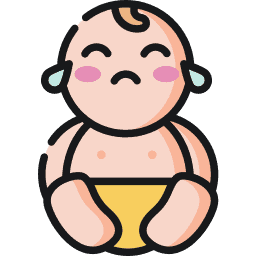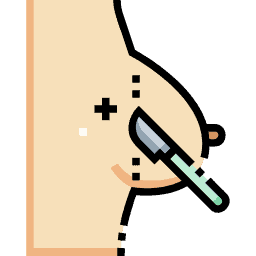Do you feel like your breasts aren’t able to produce enough milk to keep your baby full and growing?
Are you starting to suspect you might have a low milk supply and that your breastfeeding and pumping techniques aren’t solely to blame for your low output?
I feel your pain. I was so excited to begin breastfeeding as a new mom, but my confidence was shattered after the first few sessions. I knew not to expect much breast milk during initial feeding sessions, but what I was able to get wasn’t even enough to feed my baby.
Was I too stressed out? Was my body incapable of producing what my baby needed? Whatever the problem was, I needed to find solutions to boost up my milk supply.
There were no dramatic overnight fixes, but I found workable solutions that slowly and steadily kept boosting my milk supply. Finally, I was able to produce enough to start storing extras in the freezer.
Is Your Milk Supply Really Low?

Before you start pumping 10 times a day and chugging the lactation smoothies, you need to determine if your milk supply is actually low. It’s not uncommon for new moms to be confused between low milk supply and having misguided nursing expectations.
You could also have a pre-existing medical condition which is preventing you from producing the optimal amount of milk. In which case, you need to consult a specialist.
These are the most important things you should think about when deciding if your supply is low or not.
How Much Milk Should You Be Producing?
When you’re trying to decide if your milk ducts have been playing hooky when they should have been busy producing that nutritious breast milk, you first have to figure out if your baby is getting enough to drink. There are a few ways to do that:
Do You Really Have a Low Supply or Do You Have False Expectations?
Sometimes women think they should be producing more breast milk than they do. It’s frustrating to pump for 20 minutes at a time and see less than 2 ounces in your storage container.
But depending upon how new you are to breastfeeding, that’s a real possibility. And it would still be a normal amount to be producing, even though you feel like throwing your pump right out the window.
Here are some issues that frequently happen to women that trick them into falsely believing their milk supply is low.
Is A Medical Condition Affecting Supply?
If you think you have low milk supply, you might want to take a closer look at your medical history. There might be something there that’s stopping you from producing more milk.
When to Blame It on the Baby?
Sometimes you think you have low milk supply, but you’re actually pinning this failure on the wrong person. It’s possible that your baby is the one with the problem, not you.
Here are some common situations when your baby tricks you into thinking you have low milk supply. Is it too soon to ground her for stressing you out unnecessarily?
Tips for Increasing Milk Supply

1. Take it Easy Momma
Being a mom is a big job. But most of us are fortunate — we don’t have to do it alone. Ask for some help from your baby’s dad, and your family and friends. After all, it takes a village to raise a child.
With your extra time you’ll have on your hands once others start pitching in, you can implement some of these stress-busting techniques:
- Try taking deep breaths to relax yourself or practice some gentle yoga moves.
- If you can afford it, get a massage to help you take the edge off the stress you’re feeling.
- Try to carve out 30 minutes most days to cram some exercise in your schedule. Get out and go for a walk – the fresh air and sunshine along with the exercise will do wonders for your mood.
- Although it can be hard with a baby on your hands, get some extra shuteye. You might need to work in some power naps to make this one happen, but it’ll help you feel more relaxed and it should also improve your mood and outlook.
When I had my first child, I struggled with this one. I hate to ask for help, and I felt like I should be able to do it all by myself. After all, I was taking 10 weeks off for maternity leave while my husband was heading back to work. It wasn’t fair to ask him to get up in the night with the baby, was it?
So I didn’t ask him for the first month. And every time the baby cried in the night, I was the one losing sleep. After that first month, I determined it wasn’t fair to me either. I couldn’t stay awake even during the day hours because my baby was a horrible sleeper.
So I asked my husband to start taking a couple of the night shifts every week so I could at least get a little more uninterrupted sleep. It helped tremendously that I could get a good night’s sleep once in awhile at least.
2. Take In Plenty of Fluids
To produce milk, it helps to have extra fluids for your body to work with. Try to drink about 13 cups of liquids a day (9). You should drink even when you don’t feel thirsty, and if you notice your pee is looking dark yellow, you should drink a glass of water as soon as you can.
If you’re worried about drinking too much plain water and causing an electrolyte imbalance, you can add electrolyte drinks to the mix. They can be expensive so might want to get the powdered version.
Watch Out For
If you like your drinks caffeinated, you should be careful not to have more than two a day. The last thing you need right now is a baby who is too wired to sleep because she is affected by your caffeine levels.
3. Watch Your Food Selections Carefully
Foods That Increase Milk Supply
 You might have thought that your pregnancy days of watching what you ate to ensure the best possible nutrition for your baby were long gone. Wrong! It’s still important to pick healthy foods when you’re breastfeeding. Here are some of the best choices: (10)
You might have thought that your pregnancy days of watching what you ate to ensure the best possible nutrition for your baby were long gone. Wrong! It’s still important to pick healthy foods when you’re breastfeeding. Here are some of the best choices: (10)
- Fruits and vegetables: Berries, tomatoes, garlic and broccoli.
- Dark leafy greens: Spinach, kale, cabbage.
- Nuts and seeds: Flaxseeds, walnuts, chia seeds, almonds, and hemp seeds.
- Other healthy options: Oats, potatoes, quinoa, buckwheat and dark chocolate.
While there aren’t any foods that you can’t eat while you are breastfeeding, there are some that your baby might not want you to eat because they can change the flavor of your breast milk. If you notice your baby is suddenly refusing your milk, look at your diet to see if you’ve eaten any of these foods babies particularly seem to dislike — garlic, chocolate, chili pepper, strawberries, cabbage, onions and citrus fruits (11).
4. Be Careful When Messing with Your Hormones
Hormones are serious business. They can jack up your milk supply in record time. If you get your period or go through ovulation, it may temporarily decrease your milk supply. That’s out of your control, but factoring in birth control pills is something you can avoid if you’re already concerned about your milk supply.
Take Note
5. Only Take Medications If They’re Necessary
All that pill popping can have serious consequences for your milk supply. So say no to optional medications if you’re worried you aren’t producing enough milk. Avoid allergy and cold medications unless you can’t help it. If you have seasonal allergies, try limiting the time you spend outside on high pollen count days instead.
Take Note
Anytime I visited the doctor when I was breastfeeding, I always made sure to remind him I was breastfeeding when he prescribed me medication. Then when I went to the pharmacy to pick it up, I would double-check with the pharmacist that it would be okay to take that medicine while breastfeeding.
When it comes to the safety of my baby, I always think it’s best to double-check your information because doctors do make mistakes sometimes. If your doctor or pharmacist is unsure, Lactmed, a database for drugs and lactation, is a great resource to check compatibility (13).
6. Make Sure You’re Getting Enough to Eat
After spending 9 months losing our figures, moms are often eager to get them back. But don’t limit your calories too severely to make that happen.
Take Note
This is a problem I didn’t have while breastfeeding. I felt hungry around the clock. Because I was so tired, my biggest struggle was avoiding junk food and choosing healthy snacks instead.
Whether you’re struggling to fit in extra calories or you’re eating everything in sight, focus on nutritional quality to fit in those extra 500 calories. You can opt for a banana, a yogurt, and half a peanut butter sandwich to make up those calories.
7. Don’t Rely on Supplements
There are many great ways to improve your milk supply, but supplements aren’t one of them. There’s no guarantee they’ll work, so they should only be used under the care of a doctor after you have exhausted all your other possibilities.
If you decide you want to pursue supplements, you can start with a good multivitamin. That will cover any deficiencies you might have if you’re a poor eater.
In general, most teas are fine to drink, although you should stay away from certain herbal tea blends, like peppermint, oregano, parsley, or sage (15).
Although these herbs shouldn’t hurt your baby, large amounts can hurt your milk supply. There is no need to avoid them completely though — the amount you would use them in cooking is just fine.
- raspberry leaf tea
- nettle tea or teas which contain fennel
- coriander and aniseed

Nursing Tips To Produce More Milk

Nursing may be the most natural way of feeding your baby, but it certainly isn’t the easiest. But milk supply is based on milk removal – so if we can maximize the latter, we have a better chance of improving the former. To make nursing more manageable, here are some tips.
8. Avoid Formula Supplementation or Bottles
Keeping bottles and formula away from your baby is preferable when breastfeeding. Breast milk is better for your baby than formula so try to stick with it (16).
Remember
But if your doctor tells you to give your baby formula supplementation, then you, of course, need to bite the bullet and do it. To make sure it doesn’t mess with your breastfeeding efforts, choose a bottle that isn’t gravity fed, like Mimijumi bottles. They’ll help you in your efforts to make sure your baby doesn’t become a lazy feeder.
9. Tinker With Your Baby’s Latch
If you think your baby’s latch could be better, try holding your baby in a slightly different position while you breastfeed. That’s often enough to help her correct her latch.

Make sure your baby’s mouth is opened kind of like a fish. You don’t want her bottom lip tucked under because it’ll be harder for her to latch on, and it will be painful for you (17).
If you feel pain instead of discomfort when your baby first starts feeding, you’ll know you’re in trouble. Breastfeeding should never be painful when it’s done correctly. As a mom who has experienced the terror of breastfeeding a baby with a poor latch, believe me when I tell you you’ll feel it if your baby isn’t latched on correctly. You’ll almost want to scream the minute he takes your nipple into his mouth.
10. Get Comfy
You’re going to spend a lot of time breastfeeding so you had better find a good position for both you and your baby. If you’re struggling with finding a comfortable way to breastfeed your baby, check out nursing pillows, which can help tremendously.
Some moms prefer the football hold, where they tuck their baby under their arms like a football, as seen below in this video tutorial.
But I always preferred the cradle hold, where your baby’s head rests in the crook of your arm. To me, it felt the most natural.
11. Don’t Be Afraid to Have a Hands-On Experience
If you’ve been struggling to fully empty your breasts after your baby’s nursing sessions, try using your hands instead of a pump. Breast compressions can help squeeze the last drops of milk out. This gives your baby a little more milk for that feeding, and signals to your body to make more milk.
12. Give Switch Nursing and Double Nursing a Whirl
Double nursing is when you nurse your baby as you normally would, until he seems done. Then you hold him with his face on your shoulder area for 10 or 15 minutes. You can be patting his back in an attempt to burp him. The key is that you don’t want him to fall asleep during this time. Then you’ll feed him again before allowing him to go to sleep.
Switch nursing is when you move your baby back and forth several times between your breasts during a feeding. If you have a low supply or your baby isn’t gaining as much weight as you’d like, switch feeding may help.
13. Nurse More Frequently and a Few Minutes Longer
If you notice your baby seems to be getting hungry, go ahead and feed her, even if it’s an hour earlier than your schedule calls for. Your baby’s needs trump any schedule you’ve set up.
Top Tip
14. Keep Your Eyes on Your Baby
Nothing can get a mom’s milk flowing quite like focusing on her baby. The smell, sight, sound and feel of your baby will help you produce more milk and have an easier time with let down.
So if you have supply problems, turn off the television and put the focus back on your baby.
If you’re at work and you’re trying to pump, picture your baby in your mind or carry a small blanket of hers to use to stimulate let down.
15. Keep Nursing at Night
If you’re dying for a good night’s sleep, but your supply isn’t quite where you want it, you might have to give up your dreams of sleeping a full 10 hours for a little while longer.
Because prolactin (the milk-making hormone) levels are higher at night, nursing or pumping at night, even once a night, will increase your supply. If you’re skipping pumping sessions, you’re missing out on your full potential.
Editor's Note:
Michelle Roth, BA, IBCLC16. Use the Skin to Skin Method
The next time you breastfeed your baby, strip her down to nothing but her diaper, take off your shirt and let the feel of her skin on yours stimulate your milk flow.
Babies love skin to skin contact — it even helps regulate their heart rates and breathing rates (18).
With both of my babies, I made sure we had plenty of skin to skin contact. I wasn’t focused on the health benefits so much. I just knew it made my babies calmer and they seemed happier.
17. Use Pacifiers Sparingly
Babies love to suck. It soothes them, and most babies love pacifiers. While using them isn’t wrong, it can interfere with a proper breastfeeding latch. So try to avoid introducing pacifiers until well after your baby learns a proper latch (19). In addition, if your baby is always sucking on a pacifier, you may miss early hunger cues that could get in a few more feedings each day that will boost your supply.
18. Keep Your Baby Awake While Breastfeeding
There’s no doubt about it. Babies need their rest. Growing is hard work so they need all the sleep they can get. But a sleeping baby won’t be able to breastfeed. If you need your baby to take in some more milk, try to keep her stimulated during her feeding.
Make sure to talk to her, sing to her and move her from breast to breast often to keep her stimulated. You can tickle her feet, keep her upright while feeding or give her a diaper change in the middle of her feeding.
19. Throw Out the Nipple Shields
Nipple shields are silicone nipples that are worn over a woman’s real nipple when she’s breastfeeding. Although some babies might have a need for these — such as premature babies — their use can slow the milk flow a baby gets (20).
That’s not what we want to happen when we’re breastfeeding, so stick with the nipple that mother nature gave you and don’t use a substitute.
20. Increase Your Milk Supply With Pumping
When you’re already breastfeeding, you can get a lot of benefit from pumping milk too. If you do it frequently, you’ll have a great stockpile of freezer milk for emergencies.
You won’t need much equipment — just a quality pump and some breast milk storage containers.
You can continue breastfeeding as you normally would, but when you’re done, pump both breasts for about 10 to 15 minutes to get any leftover milk out.
Don’t expect great quantities, but you should be able to express a little more. Throughout the course of the day, that’ll add up to an extra bottle or so that you can store in your freezer.
If you’re overwhelmed with added pumping, give yourself a couple of times during the day where you only nurse and you don’t pump — but try to space them out. The schedule will depend upon what works for you, but you could nurse and pump at 6 a.m. and 9 a.m. before solely nursing at 11:00 a.m. Then in the afternoon fit in three additional sessions — two of which are nurse and pumps, and one that is just solely nursing.
When you’re pumping, remember to look at your baby or her picture to help with your let down reflex.
Also, you’ll want to remember to massage and compress your breasts while you’re pumping to make sure they are fully drained. As explained in the video below.
21. Use Power Pumping To Increase Your Supply
To bulk up your milk production, try your hand at power pumping once or twice every day.
How Power Pumping Works
 Power pumping is where you do multiple pumping sessions at a time to try to stimulate your milk flow. The idea is to trick your body into thinking it needs to ramp up its milk production. Here is how you’ll do it:
Power pumping is where you do multiple pumping sessions at a time to try to stimulate your milk flow. The idea is to trick your body into thinking it needs to ramp up its milk production. Here is how you’ll do it:
- Pump for 15 or 20 minutes until your milk flow is gone.
- Take a quick break for about 10 minutes and then go back to pumping for about 10 more minutes.
- You’ll take another 10-minute break before pumping a final time for about 10 minutes (21).
Taking Care of Your Breasts

Your breasts are the key to feeding your baby. If you don’t take great care of them, you may have to resort to formula feeding instead. Here are some techniques to keep them in tiptop shape.
22. Don’t Forget to Massage Them
Breast massage can help you release any milk duct clogs that could slow your flow. Over time, those clogs could lead to infection so it’s important to keep all the kinks out of the system.
For best results, you should massage your breasts every day. When you are massaging, use firm pressure, but you don’t want it to be painful.
23. Use Breast Compressions
To make sure you increase the drainage of your breast milk and fully empty your breasts, use compression movements while you’re nursing. When your baby is latched on, gently squeeze, or compress, the breast he’s nursing from.
Here is a video of Dr. Jack Newman explaining how to use compressions effectively.
24. Heat Things Up
To make sure your milk is ready to let down when your baby is ready to eat, take a hot shower right before breastfeeding. The increase in temperature of your skin will improve blood circulation. That will help speed up the let down process.
If you don’t have time for a hot shower, use a hot washcloth on your breasts instead. Try heating a rice sock and draping it on your chest, or use a product specifically designed for providing heat to the breasts.
25. Try to Avoid Engorgement
Regular nursing or pumping sessions will help you dodge engorgement. When you’re engorged, you’ll know. It’s all you can think about. It feels as if someone has used a flamethrower on your breasts. They’re rock hard and so painful because you need to relieve that pressure. It’s like a volcano in there — you need everything to spew out before you’ll get any relief.
If you let your breasts get engorged often, you’re playing with fire because it can lead to clogged ducts and mastitis. You don’t want to suffer an infection just because you wanted to skip breastfeeding, do you?
Prolonged engorgement can also lead to low supply – full breasts release a chemical signal that tells your breasts not so much milk is needed.
Editor's Note:
Michelle Roth, BA, IBCLCFAQs
Putting It All Together

This list offers the best tips I found when I was struggling with low milk supply. I noticed a big improvement in the first week when I tried these methods, and it was enough to keep my baby off formula.
All of a sudden, I didn’t feel like a failure anymore. I felt like I could handle anything motherhood threw at me.
If this list feels intimidating, start with the three or four tips you think will most help you and go from there.
You’ll get more comfortable adding new tips every day. And if you happen to stumble across some tips I didn’t list here, please let me know.
I’d love to hear new methods and how you’re doing in your journey.





























